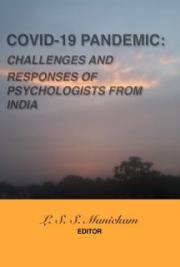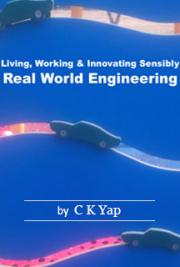REFERENCES
Abramowitz, J. S. (1997). Effectiveness of psychological and pharmacological treatments for obsessive- compulsive disorder: a quantitative review. Journal of consulting and clinical psychology, 65(1), 44.
Carr, A. T. (1974). Compulsive neurosis: a review of the literature. Psychological bulletin, 81(5), 311.
Carr, A. T. (1974). Compulsive neurosis: a review of the literature. Psychological bulletin, 81(5), 311.
Clark, D. A. (2004). Cognitive-behavioral therapy for OCD. Guilford Press.
Clark, D. A., & Purdon, C. (1993). New perspectives for a cognitive theory of obsessions. Australian Psychologist, 28(3), 161-167.
Cottraux, J., Yao, S. N., Lafont, S., Mollard, E., Bouvard, M., Sauteraud, A., ... & Dartigues, J. F. (2001). A randomized controlled trial of cognitive therapy versus intensive behavior therapy in obsessive compulsive disorder. Psychotherapy and Psychosomatics, 70(6), 288-297.
Foa, E. B., & Kozak, M. J. (1996). Psychological treatment for obsessive-compulsive disorder.
Freeston, M. H., & Ladouceur, R. (1997). What do patients do with their obsessive thoughts?. Behaviour research and therapy, 35(4), 335-348.
Freeston, M. H., Dugas, M. J., & Ladouceur, R. (1996). Thoughts, images, worry, and anxiety. Cognitive Therapy and Research, 20(3), 265-273.
Freeston, M. H., Ladouceur, R., Gagnon, F., Thibodeau, N., Rhéaume, J., Letarte, H., & Bujold, A. (1997). Cognitive—behavioral treatment of obsessive thoughts: A controlled study. Journal of Consulting and Clinical Psychology, 65(3), 405.
Kobak, K. A., Greist, J. H., Jefferson, J. W., Katzelnick, D. J., & Henk, H. J. (1998). Behavioral versus pharmacological treatments of obsessive compulsive disorder: a meta-analysis. Psychopharmacology, 136(3), 205-216.
Mawson, D., Marks, I. M., & Ramm, L. (1982). Clomipramine and exposure for chronic obsessive-compulsive rituals: III. Two year follow-up and further findings. The British Journal of Psychiatry, 140(1), 11-18.
McFall, M. E., & Wollersheim, J. P. (1979). Obsessive-compulsive neurosis: A cognitive-behavioral formulation and approach to treatment. Cognitive Therapy and Research, 3(4), 333-348.
McFall, M. E., & Wollersheim, J. P. (1979). Obsessive-compulsive neurosis: A cognitive-behavioral formulation and approach to treatment. Cognitive Therapy and Research, 3(4), 333-348.
McLean, P. D., Whittal, M. L., Thordarson, D. S., Taylor, S., Söchting, I., Koch, W. J., ... & Anderson, K. W. (2001). Cognitive versus behavior therapy in the group treatment of Obsessive-Compulsive disorder. Journal of Consulting and Clinical Psychology, 69(2), 205.
Obsessive Compulsive Cognitions Working Group. (2001). Development and initial validation of the obsessive beliefs questionnaire and the interpretation of intrusions inventory. Behaviour Research and Therapy, 39(8), 987-1006.
Rachman, S. A. (1997). Cognitive theory of obsessions. Behaiour Research Theory, 35(9):793-802.
Rachman, S., & de Silva, P. (1978). Abnormal and normal obsessions. Behaviour research and therapy, 16(4), 233-248.
Rachman, S., & Shafran, R. (1998). Cognitive and behavioral features of obsessive–compulsive disorder. Obsessive–compulsive disorder: Theory, research, and treatment, 51-78.
Rowa, K., Antony, M. M., Summerfeldt, L. J., Purdon, C., Young, L., & Swinson, R. P. (2007). Office-based vs. home- based behavioral treatment for obsessive-compulsive disorder: A preliminary study. Behaviour Research and Therapy, 45(8), 1883-1892.
Salkovskis, P. M. (1985). Obsessional-compulsive problems: A cognitive-behavioural analysis. Behaviour research and therapy, 23(5), 571-583.
Salkovskis, P. M. (1985). Obsessional-compulsive problems: A cognitive-behavioural analysis. Behaviour research and therapy, 23(5), 571-583.
Salkovskis, P. M. (1989). Cognitive-behavioural factors and the persistence of intrusive thoughts in obsessional problems. Behaviour research and therapy, 27(6), 677-682.
Salkovskis, P. M. (Ed.). (1996). Frontiers of cognitive therapy. Guilford Press.
Salkovskis, P. M., & Harrison, J. (1984). Abnormal and normal obsessions—a replication. Behaviour Research and Therapy, 22(5), 549-552.
Salkovskis, P. M., Forrester, E., & Richards, C. (1997). Cognitive-behavioural approach to understanding obsessional thinking. The British journal of psychiatry. Supplement, (35), 53-63.
Salkovskis, P. M., Thorpe, S. J., Wahl, K., Wroe, A. L., & Forrester, E. (2003). Neutralizing increases discomfort associated with obsessional thoughts: an experimental study with obsessional patients. Journal of Abnormal Psychology, 112(4), 709.
Van Balkom, A. J., van Oppen, P., Vermeulen, A. W., van Dyck, R., Nauta, M. C., & Vorst, H. C. (1994). A meta- analysis on the treatment of obsessive compulsive disorder: a comparison of antidepressants, behavior, and cognitive therapy. Clinical Psychology Review, 14(5), 359-381.
Van Oppen, P., De Haan, E., Van Balkom, A. J., Spinhoven, P., Hoogduin, K., & Van Dyck, R. (1995). Cognitive therapy and exposure in vivo in the treatment of obsessive compulsive disorder. Behaviour research and therapy, 33(4), 379-390.
Whittal, M. L. & Coehlo, J. S. (2001). Are sub-types of OCD differentially responsive to treatment. In World Congress of Behavioral Therapies.
Whittal, M. L., & McLean, P. D. (1999). CBT for OCD: The rationale, protocol, and challenges. Cognitive and Behavioral Practice, 6(4), 383-396.
Whittal, M. L., Thordarson, D. S., & McLean, P. D. (2005). Treatment of obsessive–compulsive disorder: Cognitive behavior therapy vs. exposure and response prevention. Behaviour Research and Therapy, 43(12), 1559- 1576.
= = = = = = = = = = = = = = = = = = = = = = = = = = = = =
Chapter contributed by Mr. Narendra Nath Samantaray, Clinical Psychologist, Mental Health Institute, SCB Medical College, Cuttack and Mrs. Preeti Singh, Assistant Professor of Clinical Psychology, Institute of Mental Health and Hospital, Agra.
--x—







